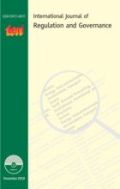Authors: Samarajiva, Rohan | Iqbal, Tahani
Article Type:
Research Article
Abstract:
Fast growing telecom markets, especially in the developing world, are attracting new types of users, especially those at the BOP (bottom of the pyramid). Innovative pricing is needed to respond to this increasingly heterogeneous demand. However, many regulators still claim to regulate prices using methods from the monopoly era, despite lacking the capacity to effectively regulate proliferating tariff plans. What actually happens is that the tariffs are ‘approved’ for the most part without proper review. One response has been of asymmetric regulation/forbearance, wherein the regulator determines that certain operators do not have SMP (significant market power) and, therefore, frees them
…from regulatory burdens, including, in many cases, the tariff regulation. This still leaves a few operators (possibly one each in different markets such as fixed, mobile, and broadband) under tariff regulation. They are required to file tariffs, and to at least go through a staff review, if not formal proceedings. Given the leakiness of most regulatory agencies, this puts them at a significant disadvantage because their competitors can prepare precisely targeted and timed responses, unencumbered by regulation. Forbearance was included in the 1997 legislation that created the TRAI (Telecom Regulatory Authority of India), before the EU (European Union) asymmetrical regulation model was fully developed. As a probable result, the TRAI did not forbear from tariff regulation on the basis of SMP-all tariffs in urban areas were forborne and some limited regulatory authority retained in rural areas. The results were some of the lowest tariffs in the world (Nokia 2008a; LIRNEasia 2008, 2009). Based on this lesson, it is proposed that ‘banded forbearance’ be introduced, even in countries with far fewer competitors than in the Indian circles (licensing areas). In this form of benchmark regulation, the regulator will • define a benchmarking methodology such as an adaptation of the OECD (Organisation for Economic Co-operation and Development) basket methodology, including peer countries and weights, • define a band of allowed variance above and below what is likely to be a moving benchmark, within which prices will be fully forborne, and • specify competition-related criteria that will be used to evaluate price movements below the lower band (limited to tests on predation and price squeeze). Durations of validity for the bands and default outcomes can also be specified in order to reduce uncertainty. The introduction of bands and specified criteria will allow operators to use innovative marketing strategies, while allowing the retention of regulatory safeguards that may be important in markets with few competitors and possibly significant control over essential facilities by incumbents. It will also result in refocusing regulatory energies on creating conditions for competition rather than sterile calculations of the X in RPI-X. The production and timely dissemination of standard price, minutes-of-use, and call-distribution data needed for OECD type benchmarking will also result in reducing the opacity of pricing for consumers, thus sharpening competitive pressures and improving the customer experience.
Show more
DOI: 10.3233/IJR-120083
Citation: International Journal of Regulation and Governance,
vol. 9, no. 1, pp. 19-40, 2009
Price: EUR 27.50




